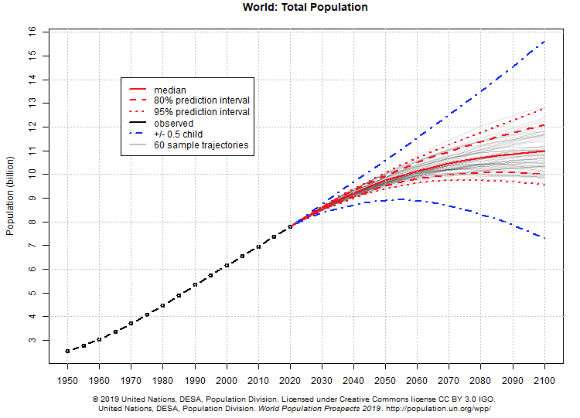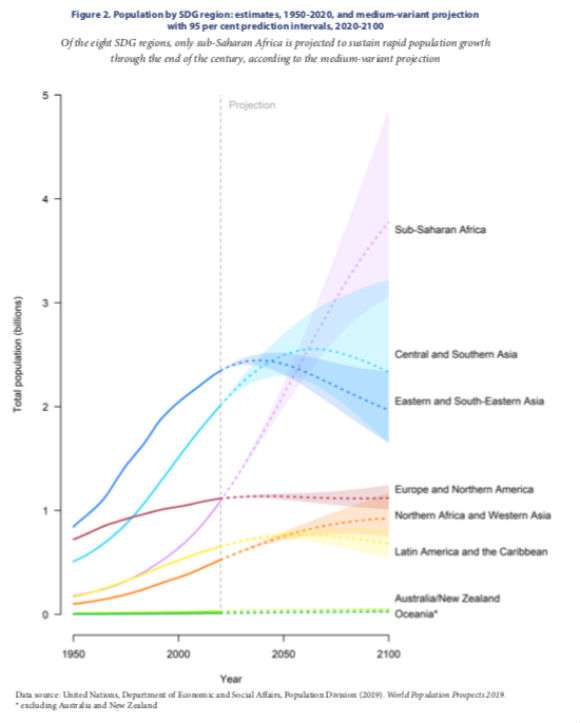The U.N. Says World Population May Top Out at 10.9 Billion Before 2100. Other Demographers Say It'll Be Much Lower.
Thanks to global expansion of reproductive freedom, actual population growth is likely to be less and peak around the middle this century

In its 2017 World Population Prospects report, the United Nations projected that world population would reach 11.2 billion by 2100 and continue to grow from there. The U.N.'s new report, however, finds that while "a continued increase of the global population is considered the most likely outcome, there is roughly a 27 percent chance that the world's population could stabilize or even begin to decrease sometime before 2100."

Why the change in projections? Because the global average fertility rate—which is the number of children each woman is expected to have over the course of her lifetime—is falling steeply. That rate stood at 5 per woman in 1960 and has now dropped by 2.5 per woman. Replacement fertility is generally defined as 2.1 children per woman. During the same era, global average life expectancy increased dramatically, from 52.5 years in 1960 to 72.6 years today.
The U.N. demographers calculate that the bulk of future population growth over the remainder of this century will be concentrated in sub-Saharan Africa, rising from just over 1 billion people today to nearly 3.8 billion by 2100. In contrast, populations in most of Asia, Europe, Latin America, and North America will peak and begin declining before the end of this century.

Demographer Wolfgang Lutz and his colleagues at the International Institute of Applied Systems Analysis (IIASA) believe that the United Nations' projections are likely to be too high. In their 2018 demographic assessment, IIASA calculates a medium fertility scenario that would see world population peak at 9.8 billion people at around 2080 and fall to 9.5 billion by 2100.
The IIASA researchers argue that the U.N. does not take adequate account of the effects on fertility of increased levels of education, especially the schooling of girls and women.
Alternatively, assuming rapid economic growth, technological advancement, and rising levels of educational attainment for both sexes—all factors that tend to lower fertility—Lutz and his colleagues project that world population will more likely peak at around 8.9 billion by 2060 and decline to 7.8 billion by the end of the twenty-first century. The global human population stands at about 7.7 billion now.
Other global trends, such as steeply falling child mortality rates, increased urbanization, rising incomes, and the spread of political and economic freedom all strongly correlate with families choosing to have fewer children. Instead of having many children in the hope that a few might survive, more parents around the world now aim at providing their children with the skills and social capital that will enable them to flourish in a modern economy.
The trend toward lower population growth is good news because it means that the global expansion of reproductive freedom is empowering more families to decide on how many children they wish to have.



Show Comments (28)